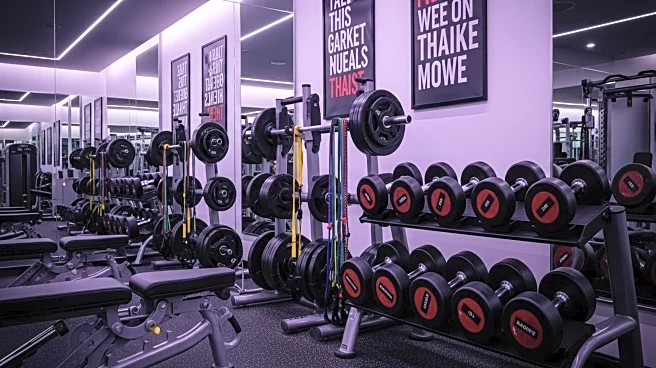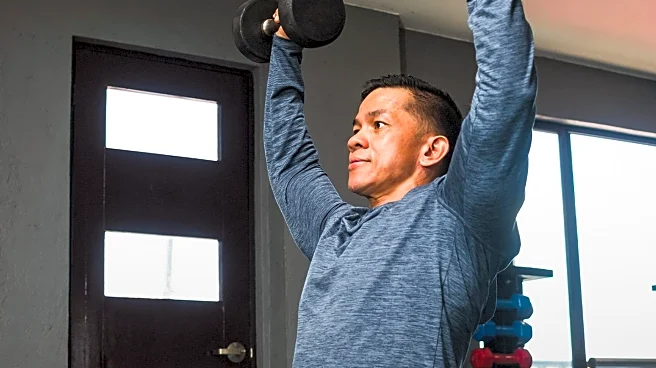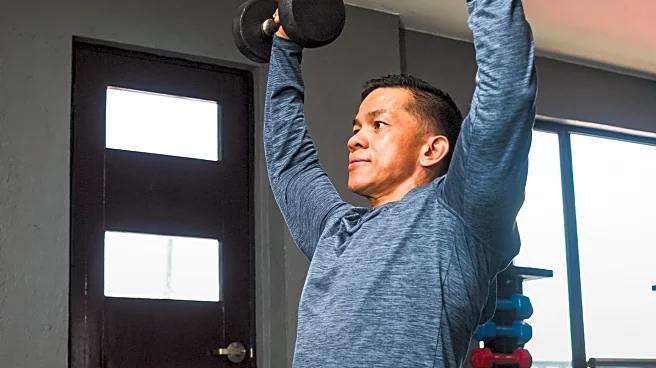What's Happening?
Men's Health has published an article detailing essential principles for building athletic training workouts. The article emphasizes the importance of power, deceleration, and directional force change in athletic training. Fitness director Ebenezer Samuel, C.S.C.S., explains that true athleticism involves the combination of strength and speed, which can be achieved through contrast training. This method pairs strength movements with power movements to enhance muscle force production. The article also highlights the significance of deceleration exercises, such as Bulgarian split squats and depth jumps, to improve an athlete's ability to change direction quickly and prevent injuries.
Why It's Important?
The principles outlined in the article are crucial for individuals seeking to improve their athletic performance beyond traditional gym exercises. By focusing on power and deceleration, athletes can enhance their ability to move efficiently and effectively in various sports contexts. This approach not only aids in physical development but also reduces the risk of injury by teaching athletes how to control their movements. The insights provided by Men's Health can benefit recreational athletes and those involved in competitive sports, offering them a structured method to achieve better results in their physical activities.
What's Next?
Athletes and fitness enthusiasts are encouraged to incorporate these training principles into their routines to see improvements in their athletic performance. The article suggests that practicing these techniques can lead to better agility and speed, which are essential for sports like basketball, soccer, and football. As more individuals adopt these methods, there may be a shift in how athletic training is approached, with a greater emphasis on power and movement efficiency.
Beyond the Headlines
The focus on athletic training principles also highlights the evolving nature of fitness culture, where the emphasis is shifting from mere muscle building to functional strength and agility. This trend reflects a broader understanding of fitness that values movement quality and versatility, potentially influencing how fitness programs are designed and marketed.











